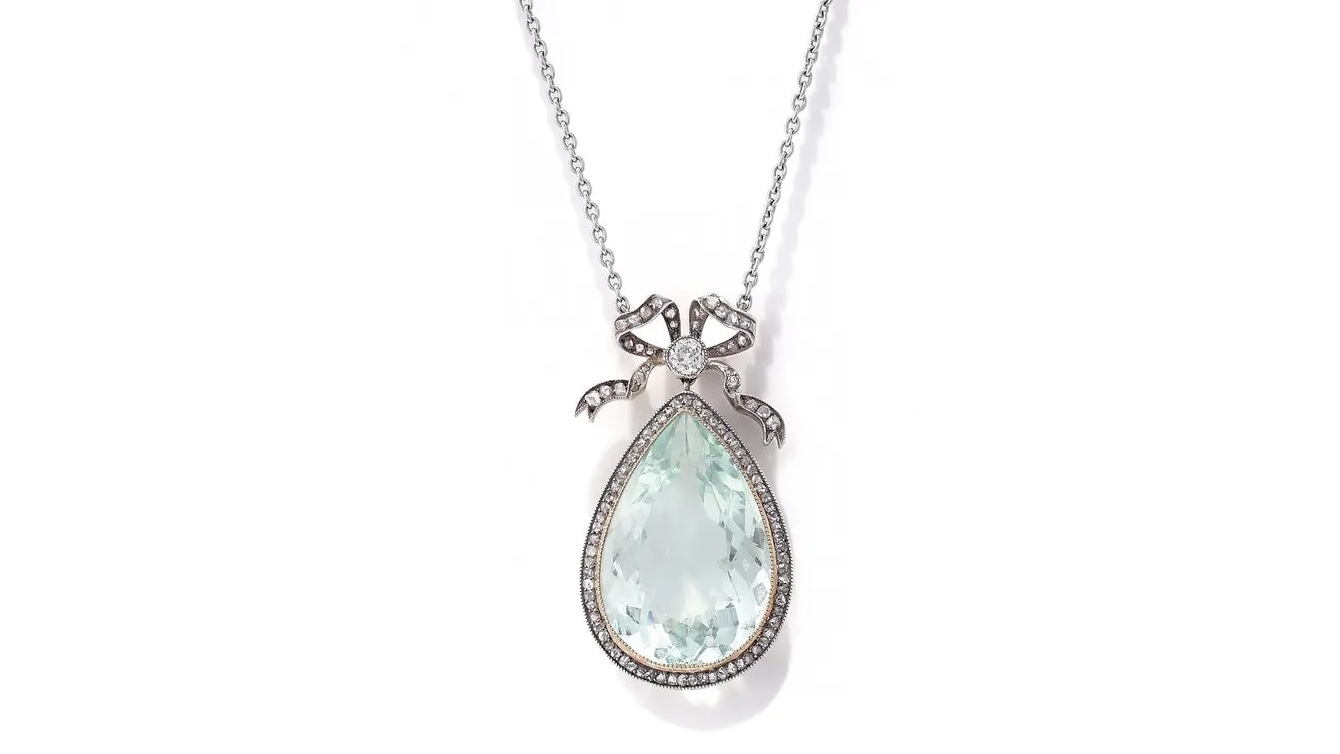The 30-carat aquamarine pendant smuggled out of Russia and recently attributed to Fabergé that sold for £35,000 — three times its estimate
The ribbon-bow surmount is synonymous with the Russian jewellery houses.


With civil war ravaging the streets of St Petersburg in 1918, a 12-year-old girl raced against all odds to flee the city. Having found an escape route, she sewed a beloved pendant — a aquamarine of more than 30 carats, set in diamond with a pretty bow detail — in the hem of her skirt and left her old life behind.
Several decades later, when she was well in her nineties, she bequeathed that one precious relic of her childhood to a dear friend. By the time that friend’s child, who had since inherited the pendant, consigned it to Dreweatts to sell at auction last year, little was known of its history and nothing of its maker. However, Charlotte Peel, head of jewellery at the auction house, had a suspicion: ‘The style was similar to other Fabergé pieces — that ribbon-bow surmount, the quality of the workmanship. Then, I saw the inventory number scratched in the side.’ The faint digits were consistent with those used by Fabergé.
There was no time to discover more ahead of the November sale in which the pendant was due to appear, but when Dreweatts was ‘lucky enough’ to receive a private Fabergé collection to sell, the pendant was pulled from the original sale and added to the new one. This gave Peel time and means to contact not one, but two Fabergé experts, Stephen Dale and Geoffrey Munn, both of whom agreed with her attribution — but the best was yet to come: ‘Geoffrey very kindly got in touch with the people who hold the Imperial Cabinet Ledgers and tracked down the inventory number of the aquamarine pendant.’ It turns out that, in 1912, the imperial family had bought it (for 460 roubles) to give it as a gift. The father of the young girl that had fled with it was a doctor, so it might have been a present for services rendered.
Peel feels ‘incredibly lucky’ that the entry appeared in the ledgers, because much disappeared in the aftermath of the October Revolution, particularly during the Red Terror, when anyone belonging to the ‘possessing classes’ was at risk of being summarily executed. ‘Anyone who worked for Fabergé took as much as they could and hid it and kept it as quiet as possible, so we're still discovering new ledgers, new archives, new books of drawings, and every time one of those gets found, there will be a new flurry of discoveries. It’s a very exciting area of work.’
The aquamarine pendant went under the hammer on March 19 as part of Dreweatts’ The Mastery of Fabergé, Jewellery and Objects of Vertu sale and sold for £35,000. It had an estimate of £7,000-£10,000.
Exquisite houses, the beauty of Nature, and how to get the most from your life, straight to your inbox.
Carla must be the only Italian that finds the English weather more congenial than her native country’s sunshine. An antique herself, she became Country Life’s Arts & Antiques editor in 2023 having previously covered, as a freelance journalist, heritage, conservation, history and property stories, for which she won a couple of awards. Her musical taste has never evolved past Puccini and she spends most of her time immersed in any century before the 20th.
